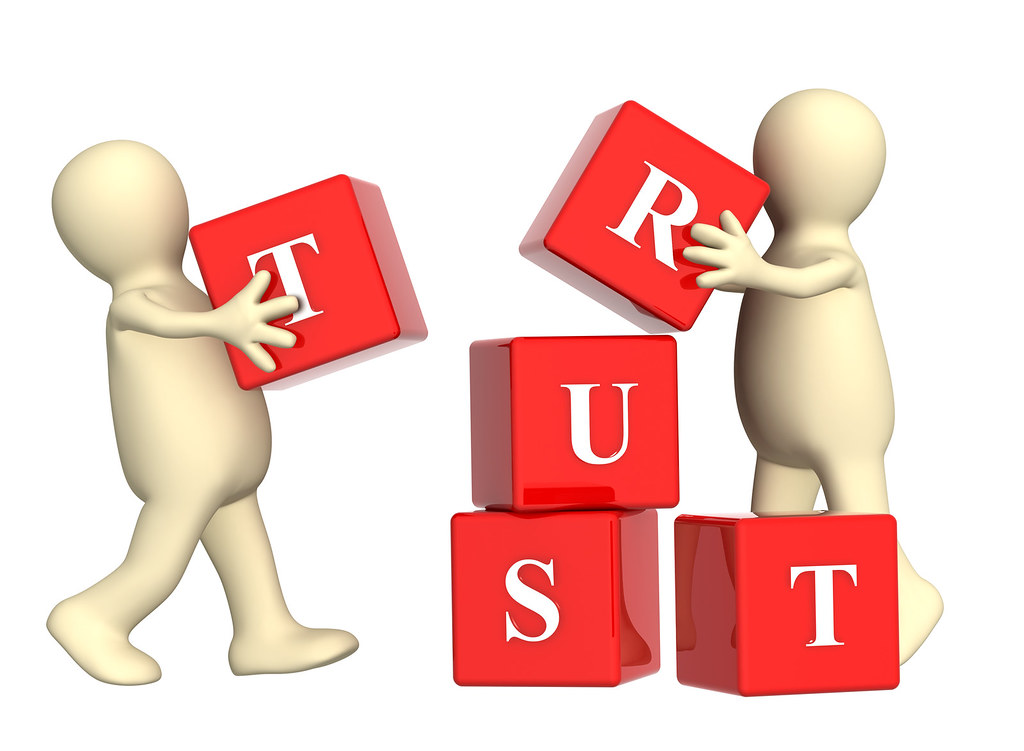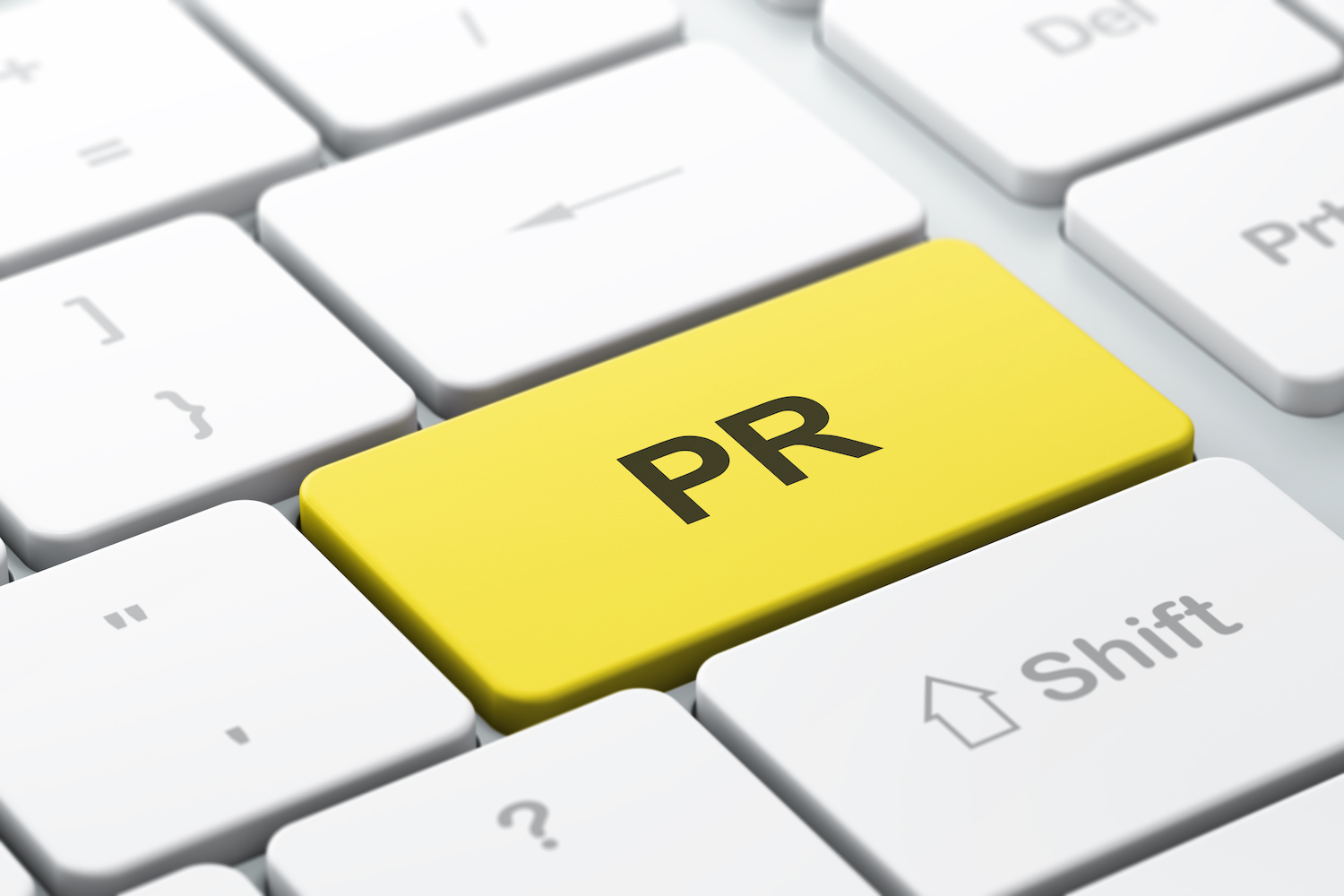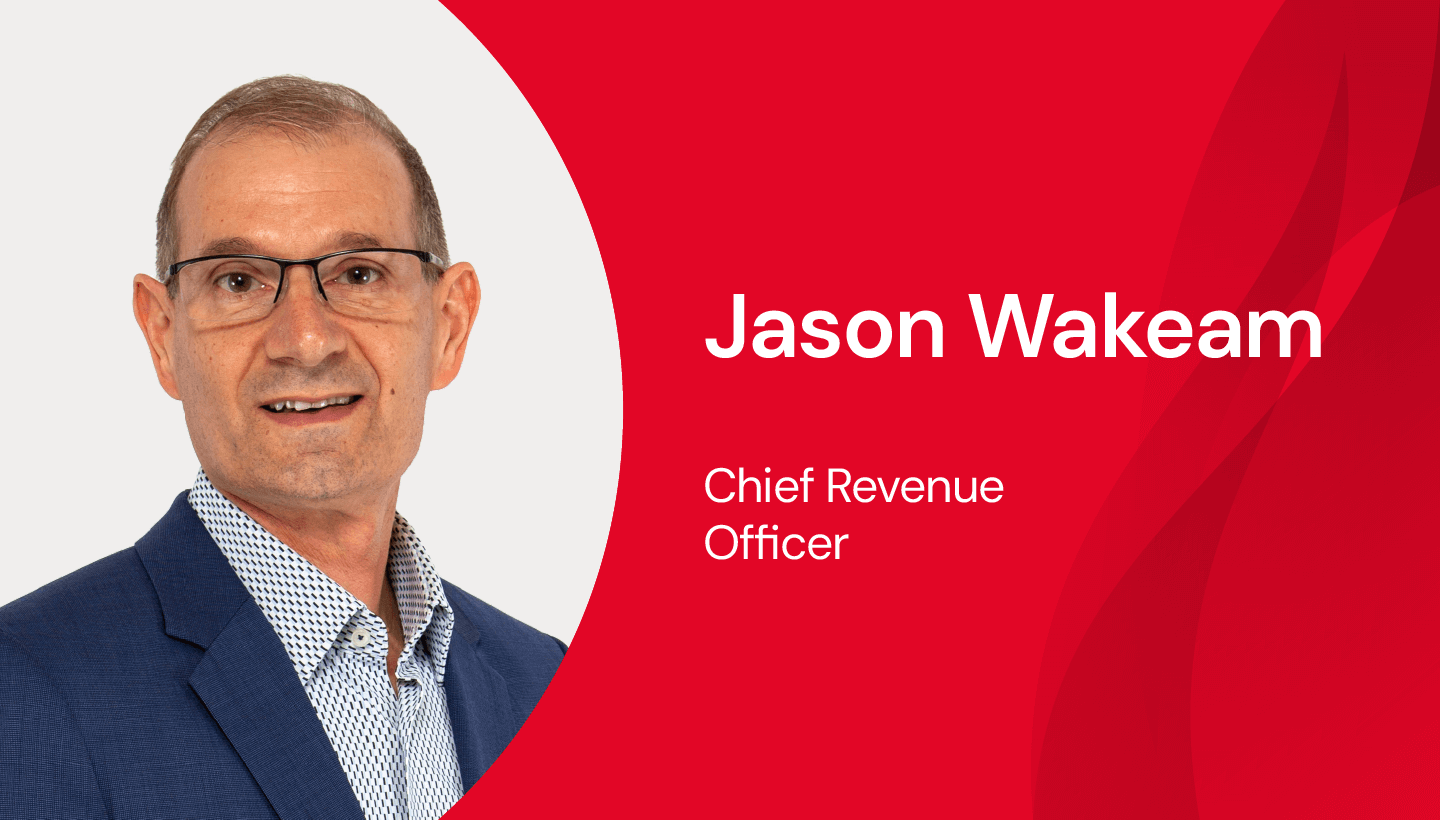This post by Backblaze’s CEO and Co-founder, Gleb Budman, is the fourth in a series about entrepreneurship. You can choose posts in the series from the list below:
- How Backblaze Got Started: The Problem, the Solution, and the Stuff in Between
- Building a Competitive Moat: Turning Challenges Into Advantages
- From Idea to Launch: Getting Your First Customers
- How to Get Your First 1,000 Customers
- Surviving Your First Year
- How to Compete With Giants
- The Decision on Transparency
- Early Challenges: Managing Cash Flow
- Early Challenges: Making Critical Hires
If you launch your startup and no one knows, did you actually launch? As mentioned in my last post, our initial launch target was to get a 1,000 people to use our service. But how do you get even 1,000 people to sign up for your service when no one knows who you are?
There are a variety of methods to attract your first 1,000 customers, but launching with the press is my favorite. I’ll explain why and how to do it below.
Paths to Attract Your First 1,000 Customers
Social Following: If you have a massive social following, those people are a reasonable target for what you’re offering. In particular, if your relationship with them is one where they would buy something you recommend, this can be one of the easiest ways to get your initial customers. However, building this type of following is non-trivial and often is done over several years.
Paid Advertising: The advantage of paid ads is you have control over when they are presented and what they say. The primary disadvantage is they tend to be expensive, especially before you have your positioning, messaging, and funnel nailed.
Viral: There are certainly examples of companies that launched with a hugely viral video, blog post, or promotion. While fantastic if it happens, even if you do everything right, the likelihood of going viral is minuscule and the conversion rate is often low.
Press: As I said, this is my favorite. You don’t need to pay a PR agency and can go from nothing to launched in a couple weeks. Press not only provides awareness and customers, but credibility and SEO benefits as well.
How to Pitch the Press
It’s easy: Have a compelling story, find the right journalists, make their life easy, pitch, and follow up. Of course, each one of those has some nuance, so let’s dig in.
Have a Compelling Story
The Basics of Your Story
Ask yourself the following questions, and write down the answers.
- What are we doing? What product service are we offering?
- Why? What problem are we solving?
- What is interesting or unique? Either about what we’re doing, how we’re doing it, or for who we’re doing it.
“But my story isn’t that exciting.”
Neither was announcing a data backup company, believe me. Look for angles that make it compelling. Here are some:
- Did someone on your team do something major before? (e.g. build a successful company/product, create some innovation, market something we all know, etc.)
- Do you have an interesting investor or board member?
- Is there a personal story that drove you to start this company?
- Are you starting it in a unique place?
- Did you come upon the idea in a unique way?
- Can you share something people want to know that’s not usually shared?
- Are you partnered with a well-known company?
- …Is there something interesting/entertaining/odd/shocking/touching/etc.?
It doesn’t get much less exciting than, “We’re launching a company that will back up your data.” But there were still a lot of compelling stories:
- Founded by serial entrepreneurs, bootstrapped a capital-intensive company, committed to each other for a year without salary.
- Challenging the way that every backup company before was set up by not asking customers to pick and choose files to back up.
- Designing our own storage system.
- Etc.
For the initial launch, we focused on “unlimited for $5/month” and statistics from a survey we ran with Harris Interactive that said that 94% of people did not regularly back up their data.
It’s an old adage that “Everyone has a story.” Regardless of what you’re doing, there is always something interesting to share. Dig for that.
The Headline
Once you’ve captured what you think the interesting story is, you’ve got to boil it down. Yes, you need the elevator pitch, but this is shorter…It’s the headline pitch. Write the headline that you would love to see a journalist write.
Now comes the part where you have to be really honest with yourself: If you weren’t involved, would you care?
The “Techmeme Test”
One way I try to ground myself is what I call the “Techmeme Test.” Techmeme lists the top tech articles. Read the headlines. Imagine the headline you wrote in the middle of the page. If you weren’t involved, would you click on it? Is it more or less compelling than the others. Much of tech news is dominated by the largest companies. If you want to get written about, your story should be more compelling. If not, go back above and explore your story some more.
Embargoes, Exclusives, and Calls to Action
Journalists write about news. Thus, if you’ve already announced something and are then pitching a journalist to cover it, unless you’re giving them something significant that hasn’t been said, it’s no longer news. As a result, there are embargoes and exclusives.
Embargoes: An embargo simply means that you are sharing news with a journalist that they need to keep private until a certain date and time.
If you’re Apple, this may be a formal and legal document. In our case, it’s as simple as saying, “Please keep embargoed until 4/13/17 at 8 a.m. California time.” in the pitch. Some sites explicitly will not keep embargoes; for example The Information will only break news. If you want to launch something later, do not share information with journalists at these sites. If you are only working with a single journalist for a story, and your announcement time is flexible, you can jointly work out a date and time to announce. However, if you have a fixed launch time or are working with a few journalists, embargoes are key.
Exclusives: An exclusive means you’re giving something specifically to that journalist. Most journalists love an exclusive as it means readers have to come to them for the story. One option is to give a journalist an exclusive on the entire story. If it is your dream journalist, this may make sense. Another option, however, is to give exclusivity on certain pieces. For example, for your launch you could give an exclusive on funding detail & a VC interview to a more finance-focused journalist and insight into the tech & a CTO interview to a more tech-focused journalist.
Call to Action: With our launch, we gave TechCrunch, Ars Technica, and SimplyHelp URLs that gave the first few hundred of their readers access to the private beta. Once those first few hundred users from each site downloaded, the beta would be turned off.
Thus, we used a combination of embargoes, exclusives, and a call to action during our initial launch to be able to brief journalists on the news before it went live, give them something they could announce as exclusive, and provide a time-sensitive call to action to the readers so that they would actually sign up and not just read and go away.
How to Find the Most Authoritative Sites/Authors
“If a press release is published and no one sees it, was it published?” Perhaps the time existed when sending a press release out over the wire meant journalists would read it and write about it. That time has long been forgotten. Over 1,000 unread press releases are published every day. If you want your compelling story to be covered, you need to find the handful of journalists that will care.
Determine the Publications
Find the publications that cover the type of story you want to share. If you’re in tech, Techmeme has a leaderboard of publications ranked by leadership and presence. This list will tell you which publications are likely to have influence. Visit the sites and see if your type of story appears on their site. But, once you’ve determined the publication, do NOT send a pitch their “tips@” or “news@” email addresses. In all the times I’ve done that, I have never had a single response. Those email addresses are likely on every PR, press release, and spam list and unlikely to get read. Instead…
Determine the Journalists
Once you’ve determined which publications cover your area, check which journalists are doing the writing. Skim the articles and search for keywords and competitor names.
Identify one primary journalist at the publication that you would love to have cover you, and secondary ones if there are a few good options. If you’re not sure which one should be the primary, consider a few tests:
- Do they truly seem to care about the space?
- Do they write interesting/compelling stories that ‘get it?’
- Do they appear on the Techmeme leaderboard?
- Do their articles get liked/tweeted/shared and commented on?
- Do they have a significant social presence?
Leveraging Google
In addition to Techmeme, or if you aren’t in the tech space, Google will become a must-have tool for finding the right journalists to pitch. Below the search box you will find a number of tabs. Click on “Tools” and change the “Any Time” setting to “Custom” range. I like to use the past six months to ensure I find authors that are actively writing about my market. I start with the “All” results. This will return a combination of product sites and articles depending upon your search term.
Scan for articles and click on the link to see if the article is on topic. If it is, find the author’s name. Often if you click on the author name it will take you to a bio page that includes their Twitter, LinkedIn, and/or Facebook profile. Many times you will find their email address in the bio. You should collect all the information and add it to your outreach spreadsheet. Click here to get a copy. It’s always a good idea to comment on the article to start building awareness of your name. Another good idea is to Tweet or like the article.
Next, click on the “News” tab and set the same search parameters. You will get a different set of results. Repeat the same steps. Between the two searches you will have a list of authors that actively write for the websites that Google considers the most authoritative on your market.
How to Find the Most Socially-shared Authors
Your next step is to find the writers whose articles get shared the most socially. Go to Buzzsumo and click on the “Most Shared” tab. Enter search terms for your market as well as competitor names. Again, I like to use the past six months as the time range. You will get a list of articles that have been shared the most across Facebook, LinkedIn, Twitter, Pinterest, and Google+. In addition to finding the most shared articles and their authors, you can also see some of the Twitter users that shared the article. Many of those Twitter users are big influencers in your market so it’s smart to start following and interacting with them as well as the authors.
How to Find Author Email Addresses
Some journalists publish their contact info right on the stories. For those that don’t, a bit of googling will often get you the email. For example, TechCrunch wrote a story a few years ago where they published all of their email addresses, which was in response to this new service that charges a small fee to provide journalist email addresses. Sometimes visiting their Twitter pages will link to a personal site, upon which they will share an email address.
Of course all is not lost if you don’t find an email in the bio. There are two good services for finding emails, https://app.voilanorbert.com/ and https://hunter.io/. For Voila Norbert enter the author name and the website you found their article on. The majority of the time you search for an author on a major publication, Norbert will return an accurate email address. If it doesn’t, try Hunter.io.
On Hunter.io, enter the domain name and click on “Personal Only.” Then scroll through the results to find the author’s email. I’ve found Norbert to be more accurate overall, but between the two you will find most major authors’ email addresses.
Email, by the way, is not necessarily the best way to engage a journalist. Many are avid Twitter users. Follow them and engage—that means read/Retweet/favorite their Tweets, reply to their questions, and generally be helpful BEFORE you pitch them. Later when you email them, you won’t be just a random email address.
Don’t Spam
Now that you have all these email addresses (possibly thousands if you purchased a list)—do NOT spam. It is incredibly tempting to think “I could try to figure out which of these folks would be interested, but if I just email all of them, I’ll save myself time and be more likely to get some of them to respond.” Don’t do it.
First, you’ll want to tailor your pitch to the individual. Second, it’s a small world and you’ll be known as someone who spams—reputation is golden. Also, don’t call journalists. Unless you know them or they’ve said they’re open to calls, you’re most likely to just annoy them.
Build a Relationship
 |
Play the long game. You may be focusing just on the launch and hoping to get this one story covered, but if you don’t quickly flame out, you will have many more opportunities to tell interesting stories that you’ll want the press to cover. Be honest and don’t exaggerate. | |
| When you have 500 users, it’s tempting to say, “We’ve got thousands!” Don’t. The good journalists will see through it and it’ll likely come back to bite you later. If you don’t know something, say “I don’t know but let me find out for you.” Most journalists want to write interesting stories that their readers will appreciate. Help them do that. Build deeper relationships with five to 10 journalists rather than spamming thousands. | ||
Stay Organized
It doesn’t need to be complicated, but keep a spreadsheet that includes the name, publication, and contact info of the journalists you care about. Then, use it to keep track of who you’ve pitched, who’s responded, whether you’ve sent them the materials they need, and whether they intend to write/have written.
Make Their Life Easy
Journalists have a million PR people emailing them, are actively engaging with readers on Twitter and in the comments, are tracking their metrics, are working their sources…and all the while needing to publish new articles. They’re busy. Make their life easy and they’re more likely to engage with yours.
Get to Know Them
Before sending them a pitch, know what they’ve written in the space. If you tell them how your story relates to ones they’ve written, it’ll help them put the story in context, and enable them to possibly link back to a story they wrote before.
Prepare Your Materials
Journalists will need somewhere to get more info (prepare a fact sheet), a URL to link to, and at least one image (ideally a few to choose from). A fact sheet gives bite-sized snippets of information they may need about your startup or product: what it is, how big the market is, what’s the pricing, who’s on the team, etc. The URL is where their reader will get the product or more information from you. It doesn’t have to be live when you’re pitching, but you should be able to tell what the URL will be. The images are ones that they could embed in the article: a product screenshot, a CEO or team photo, an infographic. Scan the types of images included in their articles. Don’t send any of these in your pitch, but have them ready. Studies, stats, and customer/partner/investor quotes are also good to have.
Pitch
A pitch has to be short and compelling.
Subject Line
Think back to the headline you want. Is it really compelling? Can you shorten it to a subject line? Include what’s happening and when. For Mike Arrington at TechCrunch, our first subject line was “Startup doing an ‘online time machine’”. Later I would include, “Launching June 6th.”
For John Timmer at ArsTechnica, it was “Demographics data re: your 4/17 article”. Why? Because he wrote an article titled “Wi-Fi Popular With the Young People; Backups, Not So Much.” Since we had run a demographics survey on backups, I figured as a science editor he’d be interested in this additional data.
Body
A few key things about the body of the email. It should be short and to the point, no more than a few sentences. Here was my actual, original pitch email to John:
Hey John,
We’re launching Backblaze next week which provides a Time Machine-online type of service. As part of doing some research I read your article about backups not being popular with young people and that you had wished Accenture would have given you demographics. In prep for our invite-only launch I sponsored Harris Interactive to get demographic data on who’s doing backups and if all goes well, I should have that data on Friday.
Next week starts Backup Awareness Month (and yes, probably Clean Your House Month and Brush Your Teeth Month)…but nonetheless…good time to remind readers to back up with a bit of data?
Would you be interested in seeing/talking about the data when I get it?
Would you be interested in getting a sneak peak at Backblaze? (I could give you some invite codes for your readers as well.)
CEO and Co-Founder
Backblaze, Inc.
Automatic, Secure, High Performance Online Backup
Cell: XXX-XXX-XXXX
The Good: It said what we’re doing, why this relates to him and his readers, provides him information he had asked for in an article, ties to something timely, is clearly tailored for him, is pitched by the CEO and co-Founder, and provides my cell.
The Bad: It’s too long.
I got better later. Here’s an example:
Subject: Does temperature affect hard drive life?
Hi Peter, there has been much debate about whether temperature affects how long a hard drive lasts. Following up on the Backblaze analyses of how long do drives last & which drives last the longest (that you wrote about) we’ve now analyzed the impact of heat on the nearly 40,000 hard drives we have and found that…
We’re going to publish the results this Monday, 5/12 at 5 a.m. California time. Want a sneak peak of the analysis?
Timing
A common question is “When should I launch?” What day, what time? I prefer to launch on Tuesday at 8 a.m. California time. Launching earlier in the week gives breathing room for the news to live longer. While your launch may be a single article posted and that’s that, if it ends up a larger success, earlier in the week allows other journalists (including ones who are in other countries) to build on the story. Monday announcements can be tough because the journalists generally need to have their stories finished by Friday, and while ideally everything is buttoned up beforehand, startups sometimes use the weekend as overflow before a launch.
The 8 a.m. California time is because it allows articles to be published at the beginning of the day on the West Coast and around lunch time on the East Coast. Later and you risk it being past publishing time for the day. We used to launch at 5 a.m. in order to be morning for the East Coast, but it did not seem to have a significant benefit in coverage or impact, but did mean that the entire internal team needed to be up at 3 a.m. or 4 a.m. Sometimes that’s critical, but I prefer to not burn out the team when it’s not.
Finally, try to stay clear of holidays, major announcements, and large conferences. If Apple is coming out with their next iPhone, many of the tech journalists will be busy at least a couple days prior and possibly a week after. Not always obvious, but if you can, find times that are otherwise going to be slow for news.
Follow Up
There is a fine line between persistence and annoyance. I once had a journalist write me after we had an announcement that was covered by the press, “Why didn’t you let me know?! I would have written about that!” I had sent him three emails about the upcoming announcement to which he never responded.
Ugh. However, my takeaway from this isn’t that I should send 10 emails to every journalist. It’s that sometimes these things happen.
My general rule is three emails. If I’ve identified a specific journalist that I think would be interested and have a pitch crafted for them, I’ll send them the email ideally two weeks prior to the announcement. I’ll follow-up a week later, and one more time two days prior. If they ever say, “I’m not interested in this topic,” I note it and don’t email them on that topic again.
If a journalist wrote, I read the article and engage in the comments (or someone on our team, such as our social guy, @YevP does). We’ll often promote the story through our social channels and email our employees who may choose to share the story as well. This helps us, but also helps the journalist get their story broader reach. Again, the goal is to build a relationship with the journalists. If there’s something relevant to your customers that the journalist wrote, you’re providing a service to your customers AND helping the journalist get the word out about the article.
At times the stories also end up shared on sites such as Hacker News, Reddit, Slashdot, or become active conversations on Twitter. Again, we try to engage there and respond to questions (when we do, we are always clear that we’re from Backblaze.)
And finally, I’ll often send a short thank you to the journalist.
Getting Your First 1,000 Customers With Press
As I mentioned at the beginning, there is more than one way to get your first 1,000 customers. My favorite is working with the press to share your story. If you figure out your compelling story, find the right journalists, make their life easy, pitch, and follow up, you stand a high likelihood of getting coverage and customers. Better yet, that coverage will provide credibility for your company, and if done right, will establish you as a resource for the press for the future.
Like any muscle, this process takes working out. The first time may feel a bit daunting, but just take the steps one at a time. As you do this a few times, the process will be easier and you’ll know who to reach out to and quickly determine what stories will be compelling.








